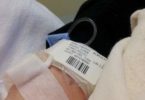Stool color is generally influenced by what you eat as well as by the amount of bile a yellow-green fluid that digests fats in your stool. As bile pigments travel through your gastrointestinal tract, they are chemically altered by enzymes changing the pigments from green to brown.
Consult your doctor if you’re concerned about your stool color. If your stool is bright red or black which may indicate the presence of blood seek prompt medical attention.
| Stool Color | What it may mean | Possible dietary causes |
|---|---|---|
| Green | Food may be moving through the large intestine too quickly, such as due to diarrhea. As a result, bile doesn’t have time to break down completely. | Green leafy vegetables, green food coloring, such as in flavored drink mixes or ice pops, iron supplements. |
| Light-colored, white or clay-colored | A lack of bile in stool. This may indicate a bile duct obstruction. | Certain medications, such as large doses of bismuth subsalicylate (Kaopectate, Pepto-Bismol) and other anti-diarrheal drugs. |
| Yellow, greasy, foul-smelling | Excess fat in the stool, such as due to a malabsorption disorder, for example, celiac disease. | Sometimes the protein gluten, such as in breads and cereals. But see a doctor for evaluation. |
| Black | Bleeding in the upper gastrointestinal tract, such as the stomach. | Iron supplements, bismuth subsalicylate (Kaopectate, Pepto-Bismol), black licorice. |
| Bright red | Bleeding in the lower intestinal tract, such as the large intestine or rectum, often from hemorrhoids. | Red food coloring, beets, cranberries, tomato juice or soup, red gelatin or drink mixes. |





